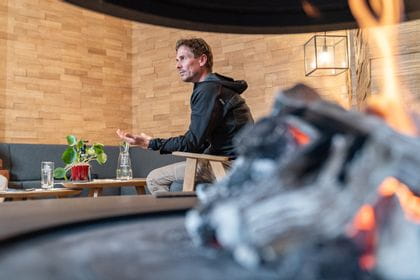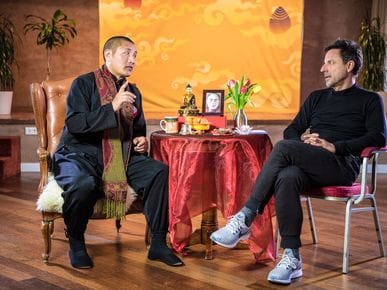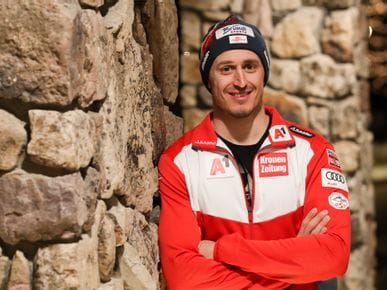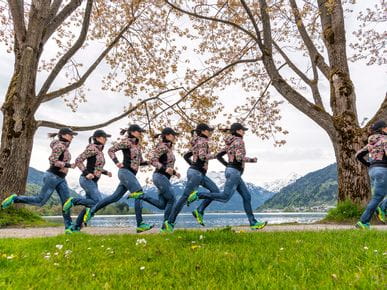A “moving” discussion between Felix Gottwald and Christoph Bründl
Christoph Bründl (CEO of Bründl Sports) and Felix Gottwald (Austria‘s most successful Olympic athlete, health scientist and entrepreneur) met at TAUERN SPA Kaprun to chat about a variety of interesting topics.
In the following interview, they discuss the importance of physical and mental fitness in leading a healthy, high-energy life – regardless of age!
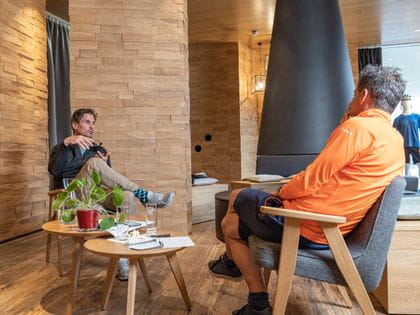
Everyone knows that exercise is essential. But what happens inside the body due to exercise and what are the benefits?
As people, we want quick results and tend to ignore the importance of the processes that lead to our goals. Losing weight, reducing your belly, improving strength and endurance – all those things demand continuity. And continuity takes, above all, a “reason why” that’s big enough along with a certain simplicity that lets you get started to begin with.
Why is exercise so important for humans? The explanation is simple: Water that’s in motion never turns foul. Humans are 60 to 75% water. A decision in favor of a more vibrant lifestyle rather than allowing ourselves to degenerate, means staying in motion. Motion is life.

During the pandemic, many people suffered from a massive lack of exercise since the couch and the smartphone were way more tempting than getting up and lacing up a pair of sneakers. However, when a certain pain level had been reached, the house cleaned top to bottom and all of the cupboards tidied up, many people did return to nature as their new fitness room and a place of meditation. What advice do you give people and what approach should we have towards exercise in general?
There really isn’t a single approach. Everyone needs to find fresh new reasons to go out and stay in motion. But there is one experience we all have in common: It’s very rare for anybody to feel worse after doing exercise or sports.
From a chemical perspective, this has to do with the “dance of messenger substances”, as Dr. Hans Gasperl expressed it so perfectly. You see, exercise reduces the stress hormone cortisol, while at the same time promoting production of the feel-good hormone serotonin. Understanding the theory is one thing, of course. Feeling the impact on your own body, over and over again, is something quite different. While we Austrians debate for hours on end with our inner couch potato, the Norwegians, for example, invite themselves with their cultural term “dørstokkmila” to take that all-decisive first step across the seemingly unsurmountable threshold out through the front door.
As they see it, the door threshold (dørstokk) is the first and simultaneously toughest stage of a 10 km run (mila). If we are able to surmount that threshold, the rest is a piece of cake.
Beginning to move is also a form of encounter – an encounter with your own body and your own feelings. It is virtually inevitable that our mind will become clearer and calmer in the process. Off-line from the outside world and on-line with yourself: just one of the many positive side effects of exercise and sport.
That definitely sounds like a great approach! What do you feel is the right amount of physical exercise, what guidelines do you suggest? 10,000 steps a day?
It is really hard to generalize. Once again, what we truly need is a healthy relationship with our own body. Understanding our bodies as the most important form of feedback, should be taught as a core subject in every school. Far too many children grow up today in an environment where exercise and sports are completely absent. Toni Innauer sends a clear message when he tells us, exercise should be taught right alongside reading, writing and arithmetic.
We are the only ones who know precisely how much exercise is best for us personally. Frankly, I feel the WHO guideline of 150 minutes per week is too little.
For my part, one hour of exercise is now part of my daily routine – in whatever form that takes. If it doesn’t happen, I feel something is missing. But when my body does tell me it needs a break, that’s exactly what it gets.
A sense of personal responsibility is also vital: That should also be taught as a core skill.
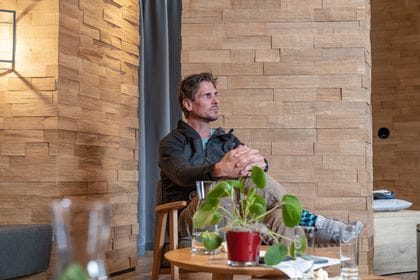
The key word is variety! You have to bear in mind the holistic aspect, strength training as well as endurance. What’s the healthy dose and what’s the right balance?
Today, research tells us that strength training and endurance training are equally important for maintaining good health and mobility.
In our Feelgood exercise studio in Zell am See, which we opened roughly 6 months ago especially for older people, people with special needs and people who are recovering from illness or injury, we see the effects of regular, moderate mobilization and strength training. Walking is important, though it simply doesn’t involve all of the important muscle groups by far. If we don’t use certain muscles, the body goes ahead and reduces them. Disbalance and abnormal posture, and in extreme cases an increased likelihood of falling are the consequences. The good news: It is never too late to strengthen our muscles. At Feelgood Zell am See, we have a very hard-working 80-year-old whose wife complained, with a twinkle in her eye, that she had to buy her husband new shirts because of all the muscle he had added. Just one of many examples of how exercise helps – regardless of age, regardless of your physical limitations.
A combination of mobility, coordination, strength and endurance is a wholesome recipe for success. The beauty of such a broad palette of four seasons here in Austria, is that we have so many different ways to get joy out of exercise. Swapping our E-bikes and hiking boots for various forms of winter sports equipment, especially in this part of the world, should be a lifelong agreement we make with ourselves. The seasons are irrelevant to our musculoskeletal system, it simply wants to be kept mobile, stimulated and challenged TODAY.
Together with Roland Radacher (Physio Schüttdorf) and Norwegian Trond Nystad, you have managed to realize a project close to your heart, the Feelgood exercise studio in Zell am See. Can you tell us a little more about it? What is the underlying concept?
This Norwegian concept involves 12 pieces of power-assisted exercise and therapy equipment manufactured by English company Shapemaster, equipment which convinced me from the very beginning with its efficiency and outstanding results. In barely 40 minutes, our exercisers are able to mobilize and strengthen their entire body either completely passively or, depending on their possibilities, integrating their own efforts. Each piece of equipment is conceived in such a way to enable easy, safe and effective exercise. Every member receives an individual introduction to the training options which are available to them here and is then able to exercise here seven days a week between 6 AM and 10 PM! Everyone experiences a great sense of achievement – without having to compare themselves to anybody else – whilst also meeting their need for continuity. Our watchword is clear: Come as you are!
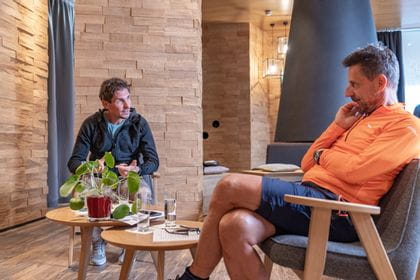
Is it possible to do too much sport? When do the effects of exercise turn negative?
It’s all about getting a healthy dose. You are basically inviting overtraining and physical overload if you forget the reason you are exercising in the first place. You need to master the balancing act between the workload you impose on your body and the recovery process. As an athlete, I grew up understanding that development actually happens during the pauses you take. This necessitates good quality when it comes to training, and good quality when it comes to regeneration. In fact, what we chalk up as recovery and regeneration often has the opposite effect on us. I am convinced: Whenever we engage in an activity with joy and childlike enthusiasm, we are better able to handle the physical exertion and become more aware of the high-quality rest we need as well. If the body communicates pain to us, we need to listen to what it’s saying and respond appropriately. If, instead of doing so, we choose to numb the pain, ignore it and ultimately sabotage ourselves, all of which are behaviors which our society has taught us, the outcome is never good.
My credo has remained the same: Simply give your best.
Simplicity teaches us to master challenges and roles with ease, while enabling us to practice constantly.
If I had to find a few words of encouragement for myself as a young lad, I would say to myself: Be courageous, trust yourself and keep practicing! In fact, that has been my motto ever since I was a little kid.
If you do feel pressure – regardless of the situation – it’s because you earned it! If we perceive pressure as something we have worked for, that refocuses our attention positively on the essentials. Excitement is a personal decisions. Though suffering, unfortunately, is too.
In addition to the physical aspect, how important is mental fitness? What is the right mindset? After all, physical and mental fitness are also the basis for emotional fitness. What techniques and methods can you recommend and/or do you employ yourself?
People are the sum of their parts. A whole bunch of moving parts, in fact, with everything interconnected.
But the good news is, no matter what area we are focused on: Everything we do and everything we don’t do affects all the other areas.
My daily routine is based on four essential pillars: mindset, exercise, nutrition and regeneration – with good sleep as a basis for everything. If good sleep somehow gets away from us, all of the rest of those moving parts simply collapse into a pile. Success is the product of our thoughts, feelings and actions. That said, it makes sense for us to attend to them. Rituals and structures in our lives help us to do that. You, Christoph, are the best example of the fact that our energy level is not a matter of good luck, bad luck or chance. Our mission must be to dedicate ourselves to the vital questions that go to the very essence of our lives and to live by the answers we find: What fulfills me? Who do I want to be? What do I really want to do? The questions remain the same. The answers change and evolve. Ultimately, it is always the little things that make the biggest difference.
Time has changed the exercise patterns of children, unfortunately not really for the better. What can we do about that? What measures can parents and schools take?
Be a living example! That’s clearly the task at hand, modeling what’s useful and fuels the flame, rather than what is damaging and extinguishes the fire. As parents and educators, it is our foremost duty not to impede the natural drive for exercise which every child is born with. In the beginning, we do everything we can to assist our children as they learn to walk and speak. But just a little later, suddenly they are supposed to sit still and be quiet, and, for some crazy reason, we go ahead and encourage it.
My own experience as a dad has been: Get out into nature because it has healing effects on everybody involved. Small children are unable to go practically anywhere on their own, though they are constantly in motion. Their job is to play. Our main job – admittedly, a major challenge at times – is to encourage them, while not constantly barging in and telling them what to do. However, showing our youngsters, through our own actions, that physical activity is normal, does us good and also happens to be great fun, that’s the most beautiful task imaginable for a parent! For my part, as a child I had lots of opportunities to try out many different sports. That’s something we also tried to do with our own kids.
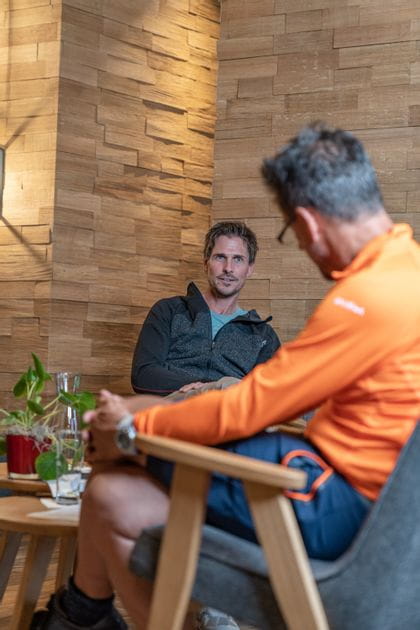

That problem isn’t restricted to children, of course. All I can say is: “Beware of the gorilla position – sitting is the new smoking”. How can I integrate simple physical exercise into my daily office?
JUST DO IT. Take exercise breaks, do exercises that activate your body, conduct discussions while you’re walking or standing, climb the stairs, stretch and bend, breathe consciously and lots more. None of those things cost money. Better still, it saves time because the effectiveness and outcome are significantly better. It simply makes no sense to repeat the same things over and over and expect a different outcome.
In the long run, that seventh espresso isn’t the solution. You need activation on every level. I do all my coaching while walking, including the reflection session afterwards. Being in motion sets something in motion. Nature and the weather turn exercise into an unforgettable experience. And when counter arguments pop up, simply ask yourself the question: Are those really the best excuses I can come up with?
The motto “a balanced life” – what does that mean for you? What does a balanced day look like in the life of Felix Gottwald?
It varies. Balance isn’t a condition, but rather a work in progress. “Workation” (a word that combines “work” with “vacation”) is what it’s all about from my perspective. Work is also a vacation, and a vacation is also work. It is absolutely legitimate to take short “holiday” breaks during your regular daily routine as well as to work from time to time during your holidays. I would be very unhappy if I was forced to completely erase the time I spend working from my life in general.
The times of my daily rituals have shifted since having children. What used to be the hour right after getting up in the morning, is now the hour right before going to bed.
My creativity feeds on movement and fresh air. Movement and sport and silence – providing the regeneration, inspiration, energy, diversity and, very important, preparation and follow-up for virtually everything. If I can say of myself: Yes, I love my daily routine, with everything it entails, then I know I’m pretty good at that balancing act.
What advice do you have for our customers wanting to stay active this winter?
The best time to prepare for winter is always TODAY. Your body wants to keep moving, your heart wants to keep pumping, those messenger substances want to keep dancing around inside your body. Stay in motion, stay connected to yourself and the world around you. Work hand-in-hand with the seasons and get joy out of the variety it gives us.
In addition to your physical and mental fitness, of course, having the right equipment also plays a major role. As a winter athlete, I have often experienced the fact that top form simply can’t make up for bad equipment. But who am I to talk – thank heavens for you guys at Bründl Sports! 😉
Thank you, Felix Gottwald, for this “moving” and inspiring chat!
